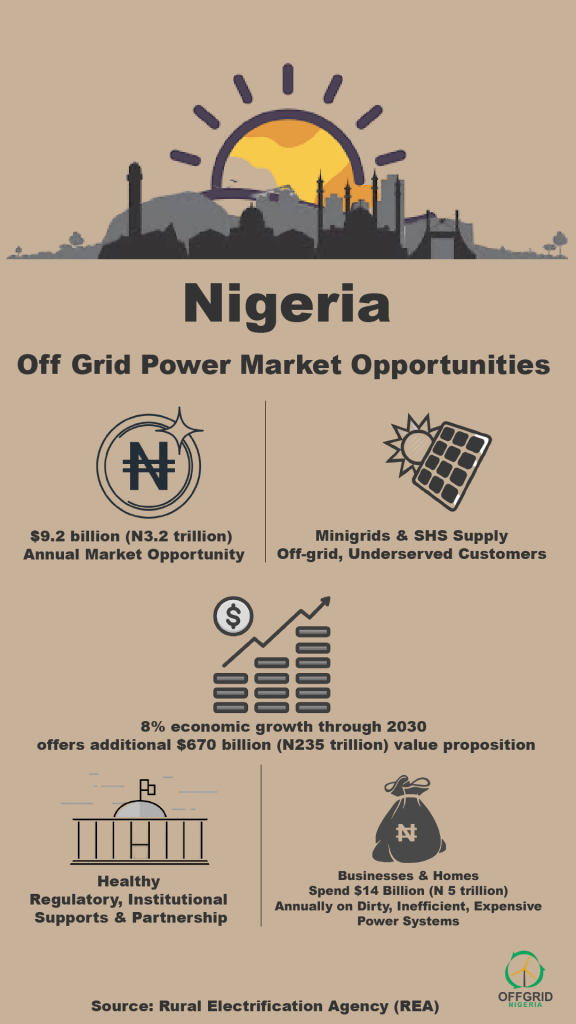The total capacity of installed wind energy across the world rose by 51.3 gigawatts (GW) in 2018, but this did not include any contribution from Nigeria which has repeatedly failed to bring on board its planned 10 megawatts (MW) Katsina wind farm.
According to the latest data released by the Global Wind Energy Council (GWEC), the wind energy industry installed 51.3GW of new capacity in 2018, maintaining it stable market trend of installing above 50GW of new capacity each year since 2014.
The data which OGN obtained in Abuja showed that 46.8GW of new onshore wind capacity was installed – a decrease of 3.9 per cent compared to 2017 (48.7 GW), while offshore wind market grew by 0.5 per cent to 4.49GW of new installations when compared to 4.47GW in 2017.
The GWEC explained that total installed wind capacity reached 591GW at the end of 2018, representing an increase of 9.6 per cent compared to the end of 2017.
It added that despite a 3.9 per cent decrease in the global onshore market in annual terms, there were promises as shown by growth in developing regions such as Latin America; South-East Asia and Africa which were responsible for 10 per cent (4.8 GW) of new onshore installations in 2018.
“New installations of 4.49GW in 2018 led the global offshore market to grow by 0.5 per cent, reaching a total installed capacity of 23GW. For the first time, China installed more offshore capacity than any other market (1.8GW), followed by the United Kingdom (1.3GW) and Germany (0.9GW),” said the report.
“GWEC forecasts that offshore wind will become an increasingly global market. If governments remain committed, and projects and investments continue, annual installations in Asia could reach 5GW or more each year. In the US, GWEC expects the developing offshore wind market to reach 1GW by 2022 – 2023,” it added.
Top shots
The report listed the top onshore wind markets in 2018 to include China – 21,200MW; USA – 7,588MW; Germany – 2,402MW; India – 2,191MW; Brazil – 1,939MW; France – 1,563MW; Mexico – 929MW; Sweden – 717MW; United Kingdom – 589MW; and Canada 566MW, while China – 1,800MW; United Kingdom – 1,312MW; Germany – 969MW; Belgium – 309MW; and Denmark – 61MW, dominated the top offshore markets in 2018.
GWEC, equally forecasted that new installations will reach 55GW or more each year until 2023, adding that stable volume will come from mature regions in Europe and the US, whilst significant growth is forecast to be driven by developing markets in South East Asia and the global offshore market.
Ben Backwell, CEO of GWEC, said about the data: “2018 was a positive year for wind in all major markets, with China leading both onshore and offshore growth. We expect huge growth in Asia through the coming decade and beyond as part of the continuing shift from Europe to Asia as the driving region for wind development. However, government support and policy are key to enabling faster market growth in key regions such as South East Asia.”
Similarly, Karin Ohlenforst, Director of Market Intelligence at GWEC, said: “Since 2014, the global wind industry has added more than 50GW of new capacity each year and we expect 55 GW or more to be added each year until 2023. In particular, the offshore market will grow on a global scale and will reach up to 7 to 8GW of new capacity during 2022 and 2023.”
Stocktaking
With regards to market growth in Africa, the report showed that Egypt and Kenya led with 380MW and 310MW of new installations to bring their total wind energy capacity to 1,190MW and 336MW respectively. South Africa which added no single capacity in 2018, however maintained its leading status in the continent with 2,085MW of installed wind energy capacity.
On the other hand, Nigeria had no mention in the report. OGN observed that this could be possible on the back of the country’s repeated failure to bring on board its Katsina windfarm which has reportedly gulped N4.4 billion (approximately $12.2 million) and missed several completion targets.





